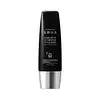What's inside
What's inside
 Key Ingredients
Key Ingredients

 Benefits
Benefits

 Concerns
Concerns

 Ingredients Side-by-side
Ingredients Side-by-side

Ethylhexyl Methoxycinnamate
UV AbsorberDiethylamino Hydroxybenzoyl Hexyl Benzoate
UV FilterWater
Skin ConditioningButylene Glycol
HumectantPolymethylsilsesquioxane
Dicaprylyl Carbonate
EmollientStearalkonium Hectorite
Gel FormingPropylene Carbonate
SolventSclerotium Gum
Emulsion StabilisingSodium Polyacrylate
AbsorbentAloe Barbadensis Leaf Juice Powder
Skin ConditioningGlycerin
HumectantPanthenol
Skin ConditioningEscin
TonicRuscus Aculeatus Root Extract
AstringentAmmonium Glycyrrhizate
MaskingCentella Asiatica Extract
CleansingHydrolyzed Yeast Protein
Skin ConditioningCalendula Officinalis Flower Extract
MaskingParfum
MaskingPhenoxyethanol
PreservativeChlorphenesin
AntimicrobialEthylhexyl Methoxycinnamate, Diethylamino Hydroxybenzoyl Hexyl Benzoate, Water, Butylene Glycol, Polymethylsilsesquioxane, Dicaprylyl Carbonate, Stearalkonium Hectorite, Propylene Carbonate, Sclerotium Gum, Sodium Polyacrylate, Aloe Barbadensis Leaf Juice Powder, Glycerin, Panthenol, Escin, Ruscus Aculeatus Root Extract, Ammonium Glycyrrhizate, Centella Asiatica Extract, Hydrolyzed Yeast Protein, Calendula Officinalis Flower Extract, Parfum, Phenoxyethanol, Chlorphenesin
Butyl Methoxydibenzoylmethane 2.7%
UV AbsorberHomosalate 9%
Skin ConditioningEthylhexyl Salicylate 4.5%
UV AbsorberOctocrylene 9%
UV AbsorberWater
Skin ConditioningGlycerin
HumectantDimethicone
EmollientCetearyl Alcohol
EmollientIsododecane
EmollientPotassium Cetyl Phosphate
EmulsifyingAcrylates/Polytrimethylsiloxymethacrylate Copolymer
Skin Conditioning1,2-Hexanediol
Skin ConditioningBenzotriazolyl Dodecyl P-Cresol
UV AbsorberGlyceryl Stearate
EmollientNiacinamide
SmoothingCaprylic/Capric Triglyceride
MaskingMagnesium Aluminum Silicate
AbsorbentCetearyl Olivate
Inulin Lauryl Carbamate
Emulsion StabilisingParfum
MaskingSorbitan Olivate
EmulsifyingAcrylates/C10-30 Alkyl Acrylate Crosspolymer
Emulsion StabilisingXanthan Gum
EmulsifyingDipropylene Glycol
HumectantTromethamine
BufferingTrisodium EDTA
Myristica Fragrans Extract
MaskingPaeonol
AntioxidantPaeonia Suffruticosa Branch/Flower/Leaf Extract
Skin ConditioningButyl Methoxydibenzoylmethane 2.7%, Homosalate 9%, Ethylhexyl Salicylate 4.5%, Octocrylene 9%, Water, Glycerin, Dimethicone, Cetearyl Alcohol, Isododecane, Potassium Cetyl Phosphate, Acrylates/Polytrimethylsiloxymethacrylate Copolymer, 1,2-Hexanediol, Benzotriazolyl Dodecyl P-Cresol, Glyceryl Stearate, Niacinamide, Caprylic/Capric Triglyceride, Magnesium Aluminum Silicate, Cetearyl Olivate, Inulin Lauryl Carbamate, Parfum, Sorbitan Olivate, Acrylates/C10-30 Alkyl Acrylate Crosspolymer, Xanthan Gum, Dipropylene Glycol, Tromethamine, Trisodium EDTA, Myristica Fragrans Extract, Paeonol, Paeonia Suffruticosa Branch/Flower/Leaf Extract
 Reviews
Reviews

Ingredients Explained
These ingredients are found in both products.
Ingredients higher up in an ingredient list are typically present in a larger amount.
Glycerin is already naturally found in your skin. It helps moisturize and protect your skin.
A study from 2016 found glycerin to be more effective as a humectant than AHAs and hyaluronic acid.
As a humectant, it helps the skin stay hydrated by pulling moisture to your skin. The low molecular weight of glycerin allows it to pull moisture into the deeper layers of your skin.
Hydrated skin improves your skin barrier; Your skin barrier helps protect against irritants and bacteria.
Glycerin has also been found to have antimicrobial and antiviral properties. Due to these properties, glycerin is often used in wound and burn treatments.
In cosmetics, glycerin is usually derived from plants such as soybean or palm. However, it can also be sourced from animals, such as tallow or animal fat.
This ingredient is organic, colorless, odorless, and non-toxic.
Glycerin is the name for this ingredient in American English. British English uses Glycerol/Glycerine.
Learn more about GlycerinParfum is a catch-all term for an ingredient or more that is used to give a scent to products.
Also called "fragrance", this ingredient can be a blend of hundreds of chemicals or plant oils. This means every product with "fragrance" or "parfum" in the ingredients list is a different mixture.
For instance, Habanolide is a proprietary trade name for a specific aroma chemical. When used as a fragrance ingredient in cosmetics, most aroma chemicals fall under the broad labeling category of “FRAGRANCE” or “PARFUM” according to EU and US regulations.
The term 'parfum' or 'fragrance' is not regulated in many countries. In many cases, it is up to the brand to define this term.
For instance, many brands choose to label themselves as "fragrance-free" because they are not using synthetic fragrances. However, their products may still contain ingredients such as essential oils that are considered a fragrance by INCI standards.
One example is Calendula flower extract. Calendula is an essential oil that still imparts a scent or 'fragrance'.
Depending on the blend, the ingredients in the mixture can cause allergies and sensitivities on the skin. Some ingredients that are known EU allergens include linalool and citronellol.
Parfum can also be used to mask or cover an unpleasant scent.
The bottom line is: not all fragrances/parfum/ingredients are created equally. If you are worried about fragrances, we recommend taking a closer look at an ingredient. And of course, we always recommend speaking with a professional.
Learn more about ParfumWater. It's the most common cosmetic ingredient of all. You'll usually see it at the top of ingredient lists, meaning that it makes up the largest part of the product.
So why is it so popular? Water most often acts as a solvent - this means that it helps dissolve other ingredients into the formulation.
You'll also recognize water as that liquid we all need to stay alive. If you see this, drink a glass of water. Stay hydrated!
Learn more about Water